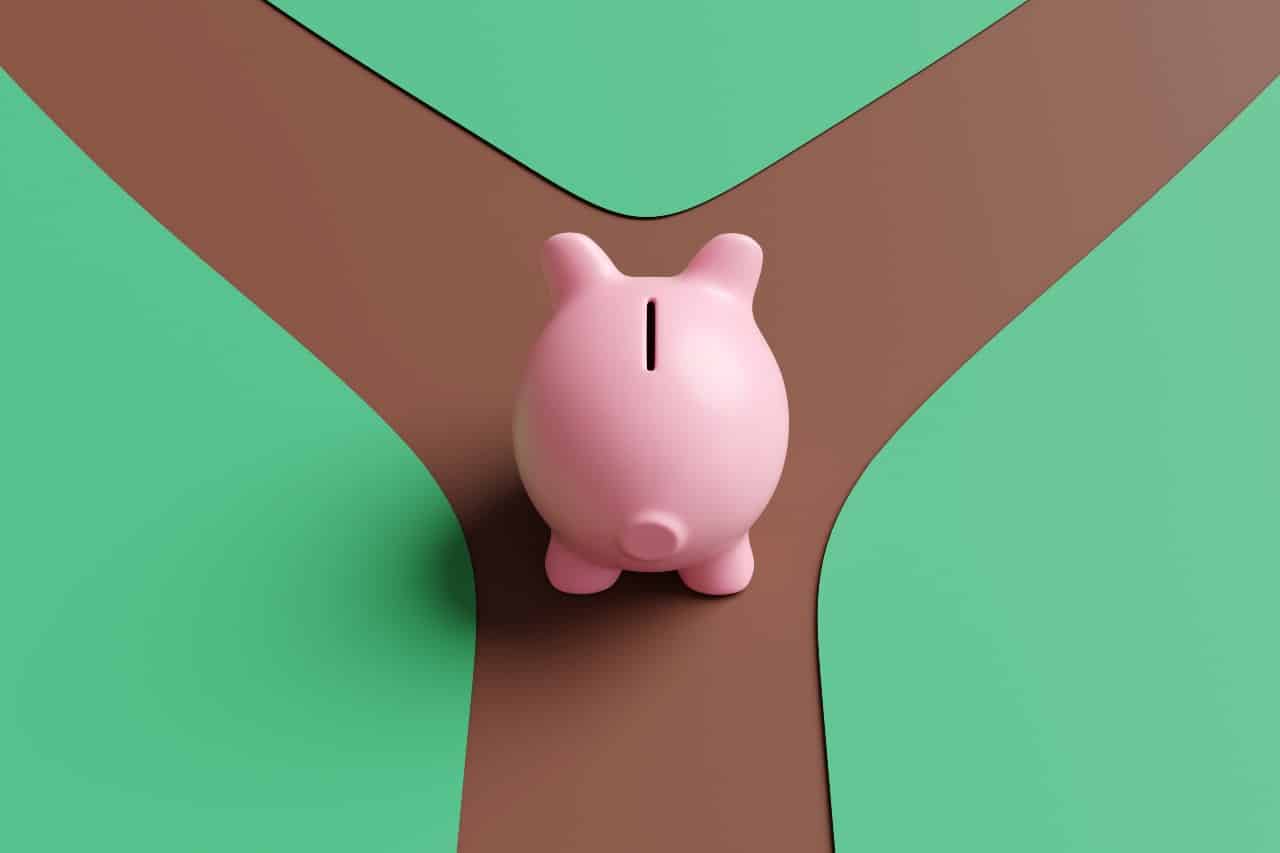Canadian household debt is once again in the spotlight. The household debt ratio is heading towards a record high.
In this article, we’ll look at what’s fueling the increase in household debt and what it means for Canadian households. After reading this article you’ll have a better understanding of the household debt ratio and other debt measurements the government and government agencies use to gauge the overall health of the Canadian economy.
Household Debt Rises in the First Quarter of 2020
The household debt ratio is once again on the rise. The household debt ratio is an important measure that indicates the debt levels of the average Canadian family.
According to Statistics Canada, the household debt to disposable income ratio reached 176.9 percent in the first quarter, up from 175.6 percent in the previous quarter.
“This means that the average Canadian had $1.77 in household debt for every dollar of household disposable income,” says Sean Cooper, Bestselling Author of Burn Your Mortgage.
The trend may be your friend, as the saying goes, but not in this case. A higher household debt ratio indicates that Canadian families are getting further in debt, a worrisome trend amidst a global pandemic.
The household debt ratio reached an all-time high in late 2017. It peaked at 178 percent. It trended downward since then, although as mentioned it’s heading back upward again in recent times.
The Coronavirus’ Role
The Coronavirus pandemic can be partially to blame for the rising household debt figures. The interruption in the household income of many families means that the household debt ratio could be rising due to families earning less and/or taking on more debt.
“If you’re having trouble paying your mortgage, although not advisable, you might use an unsecured line of credit to get by,” remarks Cooper.
Lower-income households have seen among the highest increases in household debt. Statistics Canada found that the households with the lowest income tended to have a higher household debt ratio compared to wealthier households.
But indebted Canadian households isn’t a new story. It was a worry for the Canadian government and policymakers well before the pandemic and it remains a key vulnerability to our economy now.
The worse could be on the horizon in the mid to long term, but we could actually see a drop in the household debt ratio in the short term. This is once again due to the Coronavirus.
Consumer Spending
Meanwhile, consumer spending, which was driving a lot of this debt, has been slowing. This is understandable. The government is encouraging us to only spend money on the bare necessities. Right now when a lot of Canadians would be travelling abroad for their summer vacation, we’re being strongly encouraged to travel within our own province.
However, I’m sorry to say that the trend of a falling household debt ratio likely isn’t to continue.
“The economic downturn has had a major impact on household income. Millions of Canadians are out of work. This is certainly going to hurt income growth in the coming months,” remarks Cooper.
Coupled with the temptation of low rates, encouraging more Canadians to borrow, it’s quite likely that the household debt ratio will hit an all-time high at some point in 2020, perhaps in the third or fourth quarter. This will leave Canadians with even more debt to contend with in the middle of a recession.
Canadian Households Owe $2.3 Trillion in Debt
If we want to get a better understanding of the debt numbers, it helps to drill down even further.
When we look at the household debt figures on a seasonally adjusted basis, total credit marketing borrowing was up $1.9 billion to $27.6 billion in quarter one. Meanwhile, Canadians get enough of real estate. Mortgage debt was up, even more, raising $3.8 billion to 23.1 billion. As for other debt, consumer credit and non-mortgage loans actually decreased, down $1.9 billion to $4.5 billion.
When we look at the numbers on an aggregate level, we get a similar picture. Canadians owed $2.33 trillion in total debt at the end of the quarter. This includes $1.53 trillion in mortgage debt and $802.1 billion in consumer credit and non-mortgage loans.
The Household Debt Service Ratio on the Decline
We’ve been talking a lot about the household debt ratio in this article. Let’s throw another debt ratio into the mix: the household debt service ratio.
In case you’re unfamiliar with the household debt service ratio, it’s measured as total obligated payments of principal and interest on credit market debt as a proportion of household disposable income. That figure fell from 14.81 percent to 14.67 percent.
“Although the household debt ratio may be near a record high, some good news out of the latest Statistics Canada figures is that the household debt service ratio is on the decline. This is the first time we’ve seen this happen in two years,” notes Cooper.
The reason for this is due to interest rates falling across the board from mortgages to personal loans due to the Coronavirus pandemic. COVID-19 led to lower borrowing costs for Canadians with debt.
Temporary measures, such as the ability to defer mortgage and credit card required payments, also helped lower the household debt service ratio.
Household Debt Rising in 2019, Too
It was similar in 2019 in Canada. The household debt ratio continued to head higher last year.
For every one dollar of disposable income, the average Canadian owed $1.74 in household credit market debt., according to Statistics Canada, This is up slightly from $1.73 of debt for every one dollar of disposable income in the first quarter of 2019.
It is an ongoing theme, the Bank of Canada continues to express its concern with the rising level of household debt. It has been beating that drum for a long-time.
“However, with interest rates showing no signs of heading higher anytime soon, will Canadian household heed this warning? That’s the million-dollar question,” says Cooper.
Policymakers will no doubt find a way to cast these figures in a positive light. However, this doesn’t change the fact that household debt remains high up on the list of areas of concern for the Canadian economy.
There is some risk in being complacent about household debt. If and when interest rates head higher in the coming years, Canadians could be in for a rude awakening. By tacking your debt while rates are low, not only do you not have to worry about interest rates rising eventually, you can save yourself money on interest. When rates are low, more of your money goes towards the principal.
The Second Quarter
When we look at the second quarter debt figures on a seasonally adjusted basis, it tells a similar story.
Total credit market borrowing was up to $23.5 billion from $18.9 billion in the first quarter of 2019. This includes $14.8 billion in mortgage borrowing in the quarter, up from $13.1 billion in the first quarter.
Meanwhile, the household debt service ratio increased slightly to 14.93 percent in the second quarter.
“The strength in the real estate market can explain the continued growth in mortgage debt. Near record low mortgage rates have continued to fuel the housing market,” says Cooper.
With the government of Canada bond yields being pushed even lower due to COVID, expect interest in the real estate market to continue.
Final Thoughts
Is your family’s household debt ratio on the rise? Do you anticipate having issues keeping up with your household debt in the coming months? Our offices will help you tackle your debt and get it back under control once and for all.





